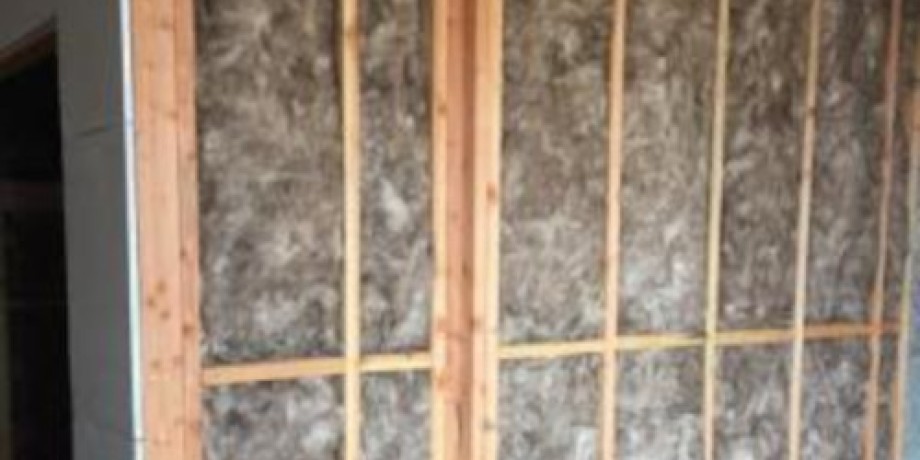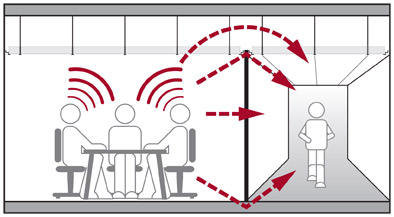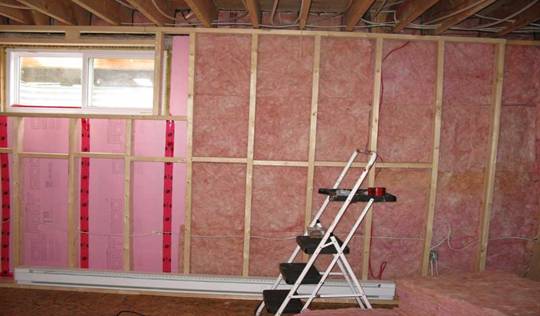Room by Room Insulation Guide

Some Key Considerations when Insulating your Home
Regardless of where you decide to install it, insulation is equally important, since in the process of installation you will notice that all the areas within your home are somehow connected through joint walls, gaps and holes in the building envelope etc, and that insulating only one part of your home can considerably contribute to increasing the energy efficiency of the entire household. However, in spite of this interconnection, not all areas within your home can be insulated in the same way. This doesn’t solely go for the insulation material and the installation process but also some other key considerations that are related to the specific area in question. For instance, some spaces within your home require extra care when it comes to moisture control, others in reference to acoustic insulation etc. Well, in order of considering all key points of your insulation project, we offer a room by room insulation guide.
Where to Start and Finish when Adding Insulation
What follows are only some most important aspects to consider when adding insulation to each room within your home, but please bear in mind that each project requires and deserves detailed planning and careful designing prior to commencing the work. However, hopefully the following few advice will give you an initial advantage and maybe an easier decision when it comes to choosing the most suitable insulation material and all necessary accessories.
Loft space
As they say, let’s start from the top. It is well known that old and unpreserved loft spaces can be a great source of heat loss but also heat gain, why they always deserve special attention, whether they are being turned into a living space or just used as storage. With loft space insulation, probably the most important thing to keep in mind is that you need some material that will be efficient not only in reducing heat transmission through convection and conduction but also radiation, since a lot of heat from the sun can enter your home through the roof space and additionally heat up your home during hot, summer months. Here, probably the best solution would be installing reflective foil insulation that is quite efficient in repealing those steaming sun rays.
Another important consideration refers to the accessibility of the loft space, since if you are dealing with a narrow and hardly accessible under roof space, you are best of with some type of blown-in insulation that can easily be inserted under the roof, but also requires professional assistance and specialised equipment.
Bedroom and living room
Here, there are many structural elements you can add insulation to so you will have to choose between floor, walls and ceiling when planning your bedroom or living room insulation. If you are willing to invest more money into the project, then we advise you go for external wall insulation which is somewhat more expensive than the alternative internal wall insulation, but is also more efficient on the long run. Then, if you are insulating a bottom floor which has no basement space underneath then it would be wise to add some insulation to the floor and thus stop the cold from penetrating from beneath. On the other hand, adding insulation to the middle stories’ floor would stop the air circulation (and thus heat and cold) between the stories which may not always be a good thing, but you are probably better off with traditional wall insulation.
Office/working space
What is of particular importance when insulating your office or working space is not only stable and comfortable temperature but also high level of acoustic insulation since you require peace and quiet if you want to be able to work efficiently and without interruptions. This is why here you should try to combine both and choose some insulation material that offers not only great thermal but also sound insulation, such as rock wool which is easy to find and install.

Baby room/Nursery
Again, when it comes to insulating your nursery, peace and quiet is of great importance why the previously mentioned rules apply. Furthermore, you can implement some additional soundproofing measures in order of making sure that your baby will have a good night sleep. For example, some simple tricks can go a long way, such as placing a thicker carpet, adding heavy draperies to the windows or putting a number of pillows within the room.
Also, please bear in mind that some insulation materials can be somewhat dangerous and irritant why try to choose some natural products, such as natural sheep wool (which offers great thermal and acoustic insulation). In other cases, make sure that the room is clean and well ventilated upon installing insulation.
Kitchen
Since kitchens are usually filled with steam and condensation why you must choose an insulation material that will be able to withstand all the moisture. This means that you not only need insulation products that are highly moisture resistant but are also vapour control membranes that able to prevent the moisture from building up within the walls and damaging the entire construction (not to mention potential health issues).
Bathroom
Everything said for your kitchen space also goes for installing insulation into your bathroom. All the water collecting on the tiles can be very damaging to the entire structure why it needs to be dealt with in due time. Here, the very insulation material as moisture resistant as it may be, will not solely be enough, but your bathroom may require some additional anti-mould measures such as installing a vapour barrier that will add protection not only to your walls but also the insulation material itself.
Basement
Finally, we have reached the bottom of your home so it is time to consider some guidelines when insulating your basement. First of all, note that the studies have shown that almost 25% of heat is lost through cold and unfinished basement spaces, why this would be a great time to consider converting your basement into a living space and of course adding some insulation. Again, you need to take care of potential moisture issues prior to considering and choosing the insulation material and install it onto clean and dry surfaces. It is probably best to go for some type of fibre insulation added to the basement walls, since if you are using the basement as a living space then you don’t want to completely cut it off from the upper floors of your home, by adding some ceiling insulation, for example. On the other hand, if you don’t plan on converting your basement any time soon, then you can completely isolate it from the rest of your interior by adding insulation to the ceiling or considered from the top, to your bottom story floor.

Buy insulation online for less money and a fast delivery in London. Visit our online shop or contact us via email or phone.




























































































































